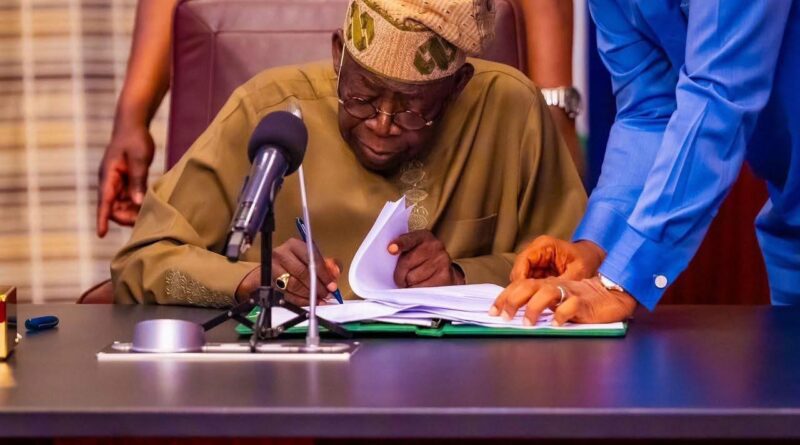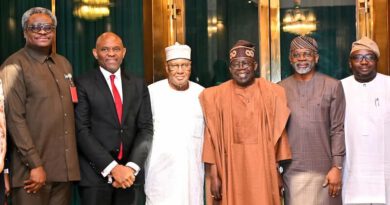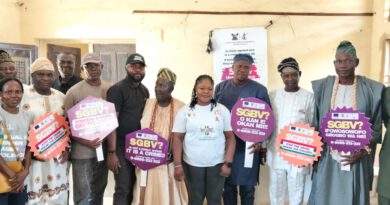POLICY STATEMENT O30 BY THE INDEPENDENT MEDIA AND POLICY INITIATIVE (IMPI)
ON:
Finally, Nigeria’s Poor Get a Makeover: A Critical Analysis of Tinubu’s application of the law of requisite varieties in the reduction of poverty in Nigeria
BACKGROUND
The only economic reform programme undertaken by a Nigerian Government that the World Bank endorsed, as it recently did to President Bola Ahmed Tinubu’s Renewed Hope Economic Agenda, was the Structural Adjustment Programme (SAP) initiated during General Ibrahim Babangida’s military presidency (World Bank, 1984).
In a 1988 report, two years after the commencement of SAP, the World Bank described it as a comprehensive economic reform effort that had successfully implemented a market-determined exchange rate, eliminated trade restrictions, and improved the business and agricultural environments.
Despite this flowery description of the state of the Nigerian economy that year, the poverty rate increased within two years of its implementation to 47.8 per cent from 44 per cent in 1986. This meant that around 52 million people, out of an estimated 110 million population for that year, were living in poverty, an increase from the 38.4 million in 1986.
The 1988 World Bank report strikes a note of déjà vu when compared to the state of the Nigerian economy in the aftermath of the implementation of the Renewed Hope Economic Agenda. In the latest edition of the Nigeria Development Update (NDU) Report, the World Bank acknowledged the positive outcomes of the federal administration’s macroeconomic reforms but notes that an estimated 139 million Nigerians may fall into poverty in 2025.
This warning by the Bank has elicited two broad reactions from Nigerians: the first is from the community of very loud political opportunists who have exploited the estimated population of the poor to deride the reform agenda.
The other response has been more sanguine. This is the class to which we unapologetically belong.
To put the World Bank’s warning in context, we track back to the same Babangida SAP era when the 47.8 per cent increase in poverty rate had declined to 42.7 per cent by 1992.
This is despite the defect that characterised the implementation of SAP back then. Regrettably, the succeeding government of late General Sani Abacha capitulated to public pressure to jettison SAP in 1993. By 1995, the poverty rate had risen again to 65.6 percent.
Tracking Historical Poverty Prevalence in Nigeria:
Empirically speaking, poverty prevalence has become somewhat integral to the Nigerian national economic space since the discovery and commercial exploitation of oil and gas in the country.
This is evidenced in the huge number of the very poor in the population, which underlines the fact that poverty reduction efforts have defied policy deployments of all types over the years.
The data are even more appalling when taken against the awkward scenario in which, despite increased growth in the economy as reflected in the Gross Domestic Product (GDP), more Nigerians fall into the poverty bracket. This is a peculiar antithesis to the generally held principle of trickle-down beneficial economic impact on the population when GDP grows.
Below is a summation of the damning historical data of the very poor in the midst of the growing GDP rate:
In 1980, out of a population of 64.6 million, 28.1 percent were below the poverty line, which translates to 18.1 million people when the GDP was estimated at $64.20 billion. In 1985, the population had grown to 75.4 million, and the GDP increased to $73.75billion, yet the percentage of the poor jumped from 28.1 per cent to 46.3 per cent, translating to 34.9 million Nigerians.
In 1990, the population increased to 86.6 million while the GDP nosedived to $54.04 billion as a result of a slide in global oil prices. The population of the poor also increased to about 39 million people. It rose to 59.3 million in 1995, out of a population of 98.9 million. More than 60 percent of Nigerians remained poor despite the GDP growing to $140.92 billion that year.
The number of the poor increased further in 1999 to 72.3 million, or 72 percent of the 109.3 million Nigerians. This was at a time when the country was witnessing economic decline as a result of its usually unplanned oil and gas boom and bust economic cycle. The GDP size that year declined to $59.15 billion. This was the nature of the national economy under the Olusegun Obasanjo and Alhaji Atiku Abubakar 1999 – 2007 presidency.
In 2002, with the population increasing to 116.4million and the size of the economy expanding to $95 billion, the number of the poor rose to 86.0 million, about 88 per cent of the population, an indication that the Nigerian economic milieu was dominantly poverty-stricken despite increased GDP valuation.
In 2003, however, with the GDP increasing to $104.74 billion, the number of poor marginally reduced to 80 million in a population of 137.2 million.
By 2007, nonetheless, the nation’s GDP valuation exponentially increased to $278.26billion, but with little improvement in the population of the very poor, which got stuck at 80.6 million.
The data of the Nigerian poor was worse in 2010 under the Presidency of Dr Goodluck Jonathan. With a $367billion GDP valuation and a population of 160 million, about 100million people were recorded to be living under the then $1.9 international poverty benchmark.
This number was further exacerbated in 2011 with more than 112 million people in a population of 162.45 million, trapped in poverty, despite the GDP valuation increasing to $414.47billion at a real growth rate of 7.36 per cent.
Perhaps, more incredulous was the data for 2015, when the GDP soared to $493 billion. After the country earned huge crude oil revenue from an average global Brent crude oil price of $100 per barrel and an average production of 2.2 million barrels per day, poverty level went northwards.
In a population of 181.25 million, 125 million Nigerians were living in poverty, according to the National Bureau of Statistics (NBS). In this particular year, the capriciousness of the federal administration became evident, with the GDP growth rate falling from an average of 6-7 per cent in 2009 to 2.79 per cent.
Year Population /GDP
Population of the Poor:
1990 – 86.6M > $54.04 > 39M
1995 – 98.9M > $140.92 > 59.3M
1999 – 109.3M > $59.15 > 72.3M
2002 – 116.4M > $95B > 86M
2003 – 137.2M > $104.74 > 80M
2007- 153.3M > $278.26 > 80.6M
2010- 160M > $367B > 100M
2011 – 162.45M > $414.47 > 112M
2015 – 181.25M > $493.03 > 125M
2018 -196M > $404.60 > 89M
We consider the management of the nation’s resources between the years 1999 and 2015 as imprudent, to say the least. It was a period characterised by waste and policy misalignment, ultimately resulting in the near-crash of the economy with its first recession in 25 years in 2016, with the economy contracting by 1.6 per cent despite a GDP value of $404.6 billion.
Yet, we must submit that it was to the credit of the late President Muhammadu Buhari administration that the number of the very poor reduced to 89 million from the 125 million recorded in 2015. And a further decline to 79 million poor people in a population of 196 million, a 30.9 per cent poverty rate in 2018.
Poverty – The Story of Nigeria’s Self-Inflicted Economic Malady
Poverty did not just happen in the Nigerian economic sphere; it was consequent upon a deliberately concocted mix of inappropriate policies deployed by a ruling elite that had no idea of how to manage the huge revenue earned from crude oil exports to impact growth and development.
As some other oil-exporting countries have found out, a dramatic increase in revenues from a product such as oil, when not managed prudently, produces what has come to be called the “Dutch disease.” This phenomenon has adverse repercussions in other sectors of the economy. The disease is most pernicious when the revenue increase that starts the problem reverses itself. The immobility of resource flows compounds the problem.
It begins with the increase in revenues, which causes an appreciation of the real effective exchange rate as seen in the early 1980s. This changes the relative profitability of tradable vs. non-tradable goods (Non-tradable goods are those that are not traded internationally. They include items such as services where the demander and producer must be in the same location) (Jenkins, Kuo and Harberger, 2011) while tradable goods are physical products exchanged across borders (Lark, 2023).
If oil revenues fall, as they did dramatically in Nigeria between 1980 and 1986, the economy is left with a highly capital-intensive production structure that can not pay for the new, higher level of imports.
For Nigeria, the exchange rate appreciated fivefold, and the relative profitability of domestically produced and resourced goods fell. The country became a net importer of agricultural commodities, particularly food, after having been a major exporter of crops such as cocoa, palm oil, kernels, and rubber, and largely self-sufficient in food.
Added to the “Dutch disease” was what came to be called the “Nigerian disease,” where so much labour was sucked out of the rural sector into non-tradable production by temporarily higher nominal wages in the urban sector, thus, agriculture was further constrained by the absence of sufficient male workers.
Excessive mechanisation of agriculture by better-off farmers, due to subsidies and under-pricing of capital goods, further displaced labour in rural areas. The Misallocation of resources in agriculture also included the construction, but not completion, of huge irrigation dams, which drew capital into agriculture but produced few production benefits.
Although the authorities attempted to compensate for the distorted domestic terms of trade through fertiliser and interest rate subsidies, these actions led to further inefficiencies in resource allocation, which tended to benefit large, better-off farmers but not small farmers who became poorer.
Overall, the government’s investments were largely unprofitable, and few were in labour-intensive production, thereby creating relatively little employment.
In fact, real wages in Nigeria, after rising sharply between 1972 and 1975, declined on average from 1976 to 1994, especially in urban areas and in the industrial sector, as the increase in the labour force exceeded demand.
Thus, while the high oil revenues were potentially very positive, their management proved very destructive in terms of the negative impact these policies had on domestic production other than oil, and their limited impact on the generation of domestic employment and domestic income.
Following the collapse of oil prices in 1982 and the rise in real interest rates, Nigeria experienced rising inflation, strict rationing of foreign exchange, and the possibility of debt rescheduling. This coincided with the rise of parallel markets so that an illegal, floating-rate parallel market coexisted with an official, fixed-rate market. This marked the irreversible unravelling of a once-upon-a-time prosperous economy.
Despite the government’s large expenditures on the social sectors during the oil boom years, it failed to put in place policies to ensure sustainability, or an adequate safety net to protect the most vulnerable groups, whose poverty worsened even during the recovery years of 1985 to 1992.
A critical examination of the growth rate of Nigeria’s GDP shows that there has been an appreciable upward trend, particularly in the present democratic political dispensation. For instance, according to CBN (2013), the annual growth rate of GDP in 2006 stood at 6.0 per cent, and this rose to 6.50 per cent in 2007. This trend declined in 2008 to 6.0 per cent and later jumped to 7.90 per cent in 2010. This development suffered a setback in 2011 and 2012 but made a reverse in 2013 and 2014, during which the growth rate of the economy stood at 6.90 per cent and 6.90 per cent respectively.
Following the GDP rebasing by the President Jonathan administration in 2014, the annual growth rate later rose to 7.44 per cent (National Bureau of Statistics 2014). Looking at this appreciable economic growth in Nigeria during the year under review, one would have expected the rate of poverty in Nigeria to be at its minimum level but not so.
Nigeria had emerged as a perennial jurisdiction of disproportional percentage of the poor and vulnerability relative to the larger population, with implications for a constrained economic-carrying capacity.
This is because poverty dampens economic growth by creating a vicious circle, whereby high poverty levels lead to lower aggregate growth. In turn, low growth results in high levels of poverty (Osinowo, Sanusi, and Tolorunju, 2019).
Will the estimated 139 million Nigerians falling into Poverty in Consequence of Tinubu’s Reform be a Self-Fulfilling Prophecy?
Tinubu’s prudent management style and attainment of macroeconomic stability, impactful macroeconomic policies influence and contribution to the attainment of rapid, sustainable economic growth aimed at poverty reduction in a variety of ways.
1. By pursuing sound economic policies, policymakers send clear signals to the private sector. The extent to which policymakers can establish a track record of policy implementation will influence private sector confidence, which will, in turn, impact investment, economic growth, and poverty outcomes.
2. Prudent macroeconomic policies can result in low and stable inflation. Inflation hurts the poor by lowering growth and by redistributing real incomes and wealth to the detriment of those in society least able to defend their economic interests. High inflation can also introduce high volatility in relative prices and make investment a risky decision.
Nigeria’s annual inflation rate, which eased for the sixth month to 18.02 per cent in September 2025, marks the softest inflation reading since May 2022, mainly supported by foreign exchange stability and the harvest season. It sufficiently allays investors’ fear of negative real returns on their investment and provides the equivalent of an economic bulwark to the erosion of the monetary value of the earnings and revenue of average or low-cadre economic agents.
In many particular ways, inflation plays a significant role in the World Bank’s template of increased estimates of poverty in a jurisdiction. In a period of persistent increase in prices, the correlation is that more people within that jurisdiction are expected to slide or fall into poverty because of the erosion of purchasing power and the inability of an increasing percentage of the people to afford basic economic sustenance items, especially food and energy.
Thus, the high inflation environment that prevailed in Nigeria, peaking at 34.8 percent in December 2024, was a major input to the estimated 139 million Nigerians falling into poverty by the World Bank.
Things have, however, changed over the last six months. From the high inflationary environment, the economy has transmuted to a vastly improved one. Now, we can safely assert that more Nigerians have been cycled out of poverty, which is consequent to the ongoing disinflation in the economic space.
With a new set of data available to us, we can further improve on our Consumer Price Index (CPI) projection to submit that the inflation rate will decline to 14 percent by December 2025. This is a shift from the 17 percent we projected in our last Policy Statement. We continue to observe a strong determination by the federal administration to ensure a low-cost economic environment, even as it grapples with labour disputes on multiple fronts.
Also associated with that projection was the possible reduction of the all-important Monetary Policy Rate (MPR), which, in our last Policy Statement, we projected to be reduced by a total of 200 basis points to 25.50 per cent. We still expect that the Monetary Policy authorities, the Central Bank of Nigeria, will, at its next meeting, have compelling reasons to, at the least, reduce the MPR by another 150 basis points.
In addition, by keeping domestic and external debt at levels that can be serviced sustainably without unduly squeezing non-debt expenditure, policymakers can also ensure that adequate domestic resources are available to finance essential social programmes.
This finds correlation in the projected reduction of the country’s debt-to-GDP ratio from 49.2 per cent in 2024 to 39.8 per cent in 2025, the first such projected decline in more than a decade; and the debt service-to-revenue ratio dropping significantly to levels not seen in many years, as contained in the same World Bank’s Nigeria Development Update report,
‘From Policy to People: Bringing the Reform Gains Home.’
Besides, inappropriate exchange rate policies distort the composition of growth by influencing the price of tradable versus non-tradable goods. Household survey data for a number of countries indicate that the poor tend to consume higher amounts of non-tradable goods while generating relatively more of their income from tradable goods (Sahn, Dorosh, and Younger, 1997).
Hence, in addition to distorting trade and inhibiting growth, an overly appreciated exchange rate can impair the relative incomes and purchasing power of the poor. The distortion associated with multiple foreign exchange windows has now been effectively corrected with a trail of appreciation of the Naira over the past seven months. Foreign exchange rates are now below the N1,500 mark as envisioned by the federal administration in its Medium Term Economic Framework (MTEF) for the 2025 budget.
By building and maintaining an adequate level of net international reserves, a country can weather a temporary shock without having to reduce essential pro-poor spending. External shocks can be particularly detrimental to the poor because they can lower real wages, increase unemployment, reduce non-labour income, and limit private and net government transfers.
In this way, the accretion to Nigeria’s foreign reserves shows a standing of up to $43 billion as of 11 October 2025. Although we have reviewed how scenarios of economic growth have not impacted poverty reduction in Nigeria, yet, in most cases where inclusive growth occurs, poverty falls.
Furthermore, since similar growth rates have different impacts on poverty reduction, we may conclude that growth is good for the poor, but it is not enough (an essential but not sufficient condition for poverty alleviation). In this instant case, we have observed the increasing momentum being recorded in the Nigerian economy with the GDP growing by 4.23 percent in the second quarter of 2025, a significant acceleration from the 3.13 percent growth in the first quarter.
In this consideration, we reinforce the GDP projection we earlier made in our Policy Statement No. 28 that the GDP growth rate will increase by 5 percent by the end of 2025.
When this is coupled with the CBN’s composite Purchasing Managers’ Index (PMI) for the month of September 2025 which stood at 54.0 points, signalling sustained expansion in aggregate economic activity for the 10th consecutive month, with increased record of employment activities by the private sector which is a principal indicator of poverty reduction, we can project that a significant reduction in poverty rate would be recorded by year end 2025.
When all these macroeconomic elements are aggregated, what is apparent is that the federal administration had, more than anything else, committed itself to serious prudential management that was lacking in the years between 1999 and 2015. We note that the federal administration has made an increase in GDP growth, disinflation, and unemployment key variables in its poverty reduction approaches
The Law of Requisite Varieties and the Tinubu Administration’s Poverty-Reduction Initiatives:
We note the historical efforts to reduce poverty by various administrations which include direct interventions like the Directorate for Food, Roads and Rural Infrastructures (DFRRI) 1986 – rural areas feeder roads, rural water supply and rural electrification. National Directorate of Employment (NDE) 1986 – unemployed youths training, finance and guidance, and Better Life Programme (BLP) 1987 – rural women self-help and rural development programmes, skill acquisition and health care.
Others are: People’s Bank of Nigeria (PBN) 1989 – encouraging savings and credit facilities for the underprivileged in rural and urban areas. Community Banks (CB) 1990 – micro enterprises in urban areas, banking facilities. Family Support Programme (FSP) 1994 – Health care delivery, child welfare, and youth development for families in rural areas. Family Economic Advancement Programme (FEAP) 1997 – credit facilities to support the establishment of cottage industries in rural areas (Oladeji and Abiola, 1998).
There was also the National Poverty Eradication Programme (NAPEP), which was the central pillar of the Obasanjo administration’s poverty eradication programme. Like other programmes before it, it reflected very little on pro-poor schemes, leading to poorly designed money-guzzling schemes like ‘Keke NAPEP’ which hardly contributed to reducing poverty in the long-term.
The Muhammadu Buhari administration profiled a more detailed National Social Investment Programme (NSIP) in 2016 to address poverty and socio-economic inequality. Institutionalised by law in May 2023, NSIP consisted of four core programmes: The N-Power, an initiative to provide job training, education, and stipends to unemployed young Nigerians between the ages of 18 and 35; Government Enterprise and Empowerment Programme (GEEP), a micro-lending programme that provided interest- and collateral-free loans to entrepreneurs and small business owners. It had several sub-initiatives: TraderMoni, which provided small loans to petty traders and artisans. MarketMoni, aimed at market women and FarmerMoni which supported small-scale farmers and agricultural workers; Conditional Cash Transfer (CCT) Programme, a social safety net providing a monthly stipend to the most vulnerable and poorest households to help with basic needs and National Home-Grown School Feeding Programme (NHGSFP), an initiative aimed at improving school enrolment by providing free, nutritious meals to millions of primary school pupils. It also stimulated the local economy by sourcing ingredients from nearby farmers and engaging community cooks.
In the context of multidimensional poverty, however, we note that certain common indices and factors are used to classify the different forms of poverty at a given time and place. Irrespective of the yardstick used to quantify poverty, it has been identified that it is caused by several factors and can only be reduced through a multi-pronged policy approach.
It is in this context that we frame this poverty reduction review around the Law of Requisite Variety. This law explains why the amount of variety in a system must match the amount of variety in its environment to achieve control and stability. In other words, if an environment is changing faster than the managers’ ability to respond, the consequences will be chaotic. It is within this framework that we review the multiplicity of approaches that are being undertaken and deployed by Tinubu’s federal administration to reduce poverty.
Growth by itself may not be long-lasting and sustainable. We can, however, attest to the implementation of a variegated poverty-reduction strategy that is pivoted on rapid but sustained economic growth and institutional pre-conditions which combine pro-growth and pro-poor policies that enable the poor to participate in opportunities, and also contribute to future growth by the Tinubu-led federal administration.
The Tinubu Administration’s Bouquet of Social Interventions
• Subsidised access to dialysis: One of the federal administration’s poverty reduction programmes is the approval of a subsidy to ease the burden of kidney dialysis for Nigerians by slashing the cost per session from ₦50,000 to ₦12,000. The subsidy is already being implemented in federal hospitals across the six geopolitical zones.
• Agricultural loans and microfinance for farmers and small businesses: The federal government is to begin disbursing interest-free loans to smallholder farmers and micro-business owners across Nigeria before the end of 2025. The initiative is part of the Government Enterprise and Empowerment Programme (GEEP) being implemented under the Federal Ministry of Humanitarian Affairs and Poverty Alleviation.
The loans of up to ₦100,000 per beneficiary will be offered under FarmerMoni, a scheme designed to support small-scale farmers engaged in poultry, aquaculture, livestock rearing, and crop production.
Beneficiaries will also enjoy a six-month grace period before repayment begins, allowing them to acquire critical inputs such as fertilisers, veterinary drugs, and farm tools. These are not grants but repayable loans designed to help Nigerians grow their businesses, join the formal financial system, and create jobs (Blessing, 2025).
• Monthly Pension Increase: All retired federal employees under the Contributory Pension Scheme (CPS) are to receive a N32,000 monthly pension increase. The sum will be paid to each of them from a N758 billion bond approved by President Bola Tinubu for clearing all outstanding pension liabilities.
The President okayed the bond to ensure that the retirees also benefited from the National Minimum Wage Amendment Act 2024 and Consequential Adjustments. The N32,000 is the baseline every retiree in the education and health sectors, as well as security and the Armed Forces on the CPS will earn monthly, irrespective of his or her accumulated savings (Chiejina, 2025).
• Tertiary Institutions Staff Support Fund (TISSF): The federal government has launched an interest-free loan scheme to provide financial support and professional development for staff of tertiary institutions across Nigeria. The scheme is called the Tertiary Institutions Staff Support Fund (TISSF). It is described as a strategic platform to empower both academic and non-academic staff (Alausa, 2025).
• Creative Economy Development Fund (CEDF): Nigeria’s federal government, through the Ministry of Arts, Culture and Creative Economy, has officially launched Phase 2 of the CEDF, featuring a brand-new user-friendly interface that simplifies access to funding. Youth-led and creative businesses across Nigeria from video gaming, film, music, animation, fashion, publishing, visual arts, culinary arts, and tourism, can now apply for grants, loans, and equity investments up to $100,000 to scale their operations, innovate, and contribute to sustainable economic growth.
It focused on mature creative projects seeking $100,000 or more, with project incubation and acceleration activities underway, and disbursements expected to start from January 2026. The first phase laid the groundwork for IP-backed financing, opportunity awareness, and capacity building across creative sectors such as film, digital arts, and cultural tourism.
• Scrapping of Telecom Levy: As part of engendering a low-cost telecommunication access, the Federal Government of Nigeria has scrapped the 5 per cent excise duty on telecom services. The levy, which was initially suspended and now removed, is set to ease the pressure of voice and data service costs on over 170 million Nigerian subscribers.
• Increasing the Reach of the Home-Grown School Feeding Programme: The federal government has set a target of reaching 20 million children through the Home-Grown School Feeding Programme by 2026. It is described as both an educational investment and a national security strategy (Shaibu, 2025)
• Five million New Beneficiaries of RHGEEP: The Federal Government is in the process of enrolling five million new beneficiaries under the third phase of its Government Enterprise and Empowerment Programme, known as Renewed Hope GEEP (RHGEEP 3.0). The new phase, which was flagged off in Abuja, is designed to broaden financial inclusion and expand empowerment initiatives, particularly for women and youth, with a target of reaching five million Nigerians by 2027.
• Innovation Development and Effectiveness in the Acquisition of Skills: The federal government has announced plans to train more than 30,000 youths under the second cohort of the Innovation Development and Effectiveness in the Acquisition of Skills (IDEAS) and Technical and Vocational Education and Training (TVET) initiative. The second phase of the project, which began on August 25, covered 36 skill areas. It is being implemented by the Federal Ministry of Education with funding from a World Bank-supported IDEAS project designed to strengthen Nigeria’s TVET system (Ikpefan, 2025).
• Jobs for 20 million Nigerian Youths: The Federal Government has inaugurated a new national skills programme aimed at connecting 20 million young Nigerians to jobs, training, and entrepreneurship opportunities by 2030.
• Cash Transfer for 15 million Nigerians: The government has revived its temporary cash transfer programme. This initiative aims to provide financial relief to 15 million vulnerable Nigerians and their families, helping them manage the rising living costs.
• Digital Access and Livelihood Initiative (DALI): The Digital Access and Livelihood Initiative (DALI) is a demand-driven national talent pipeline designed to link foundational and work-readiness training directly to guaranteed jobs or enterprise pathways. The platform unifies government, private sector leaders, development partners, and the boundless energy of the nation’s youth under a single banner.
Conclusion
We must, at this juncture, acknowledge the speed, consistency, and coordination of fiscal and monetary policies to attain macroeconomic stability by the Tinubu-led federal administration. This is not an everyday accomplishment for an economy that has historically depended on the positive but unpredictable movements of global crude oil prices to achieve any form of macroeconomic stability. All related publicly circulated data sets have validated the fact that the macroeconomic stability currently recorded was enabled as essentially a process of deliberate calibration of economic and financial policies.
This implies the inclusivity inherent in the macroeconomic gains. By extension, we can submit that going forward, an expansion in economic activities will reflect on the positive economic standing of Nigeria’s poor. This holds a huge promise for millions of the poor and vulnerable who are currently and those who would be lifted out of poverty. This is in addition to the millions of poor that would be salvaged from a state of economic and financial paralysis as a result of the multiple social intervention programmes that continue to handhold and walk the economically vulnerable out of the labyrinth of poverty.
Omoniyi M. Akinsiju, PhD
Chairman,
Independent Media and Policy Initiative (IMPI)
October, 2025




